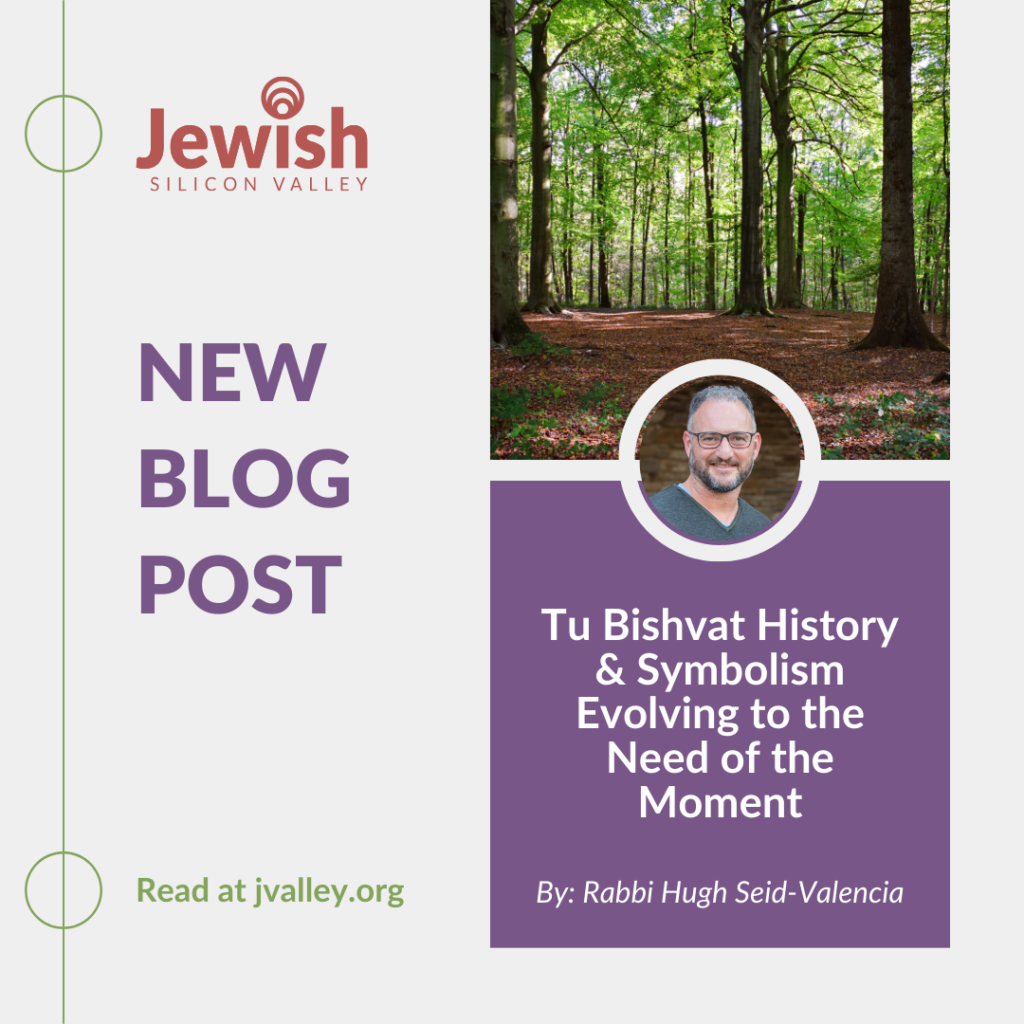Tu Bishvat History & Symbolism Evolving to the Need of the Moment
By, Rabbi Hugh Seid-Valencia
When scholar and author Dara Horn visited our community last month, she said, among many other provocative things, that Jews predate the concepts of both religion and nationality. The holiday of Tu Bishvat, the fifteenth day of the month of Shevat, serves as a great example of this phenomenon. Tu Bishvat serves as a paradigm for the way Jewish observances evolve over time in relation to the needs of the moment.
Originally, Tu Bishvat was not so much a holiday but a way for farmers in the land of Israel to comply with the commandment in Leviticus not to eat the fruit of a tree before the tree is three years old. Tu Bishvat, then, marked the birthday of trees for the purposes of tithing.
As Tu Bishvat evolved, it transformed into a focal point for commemorating the connection between the Jewish people and the Land of Israel, a time to focus on spiritual renewal, a day for planting new trees, and a day to focus on environmental sustainability.
While in past years, Tu Bishvat provided me with the opportunity to consider my relationship to the natural world in general and to the trees in my environment more specifically, things feel different this year. This year, Tu Bishvat is providing me with an opportunity to consider my own, and the Jewish people’s, ongoing and deeply rooted connection with the Land of Israel.
I’m looking forward to exploring this theme at this year’s Jewbilee on the morning of Sunday, January 28th, when we consider this ancient and ongoing “longing for the fruit of the land.”






